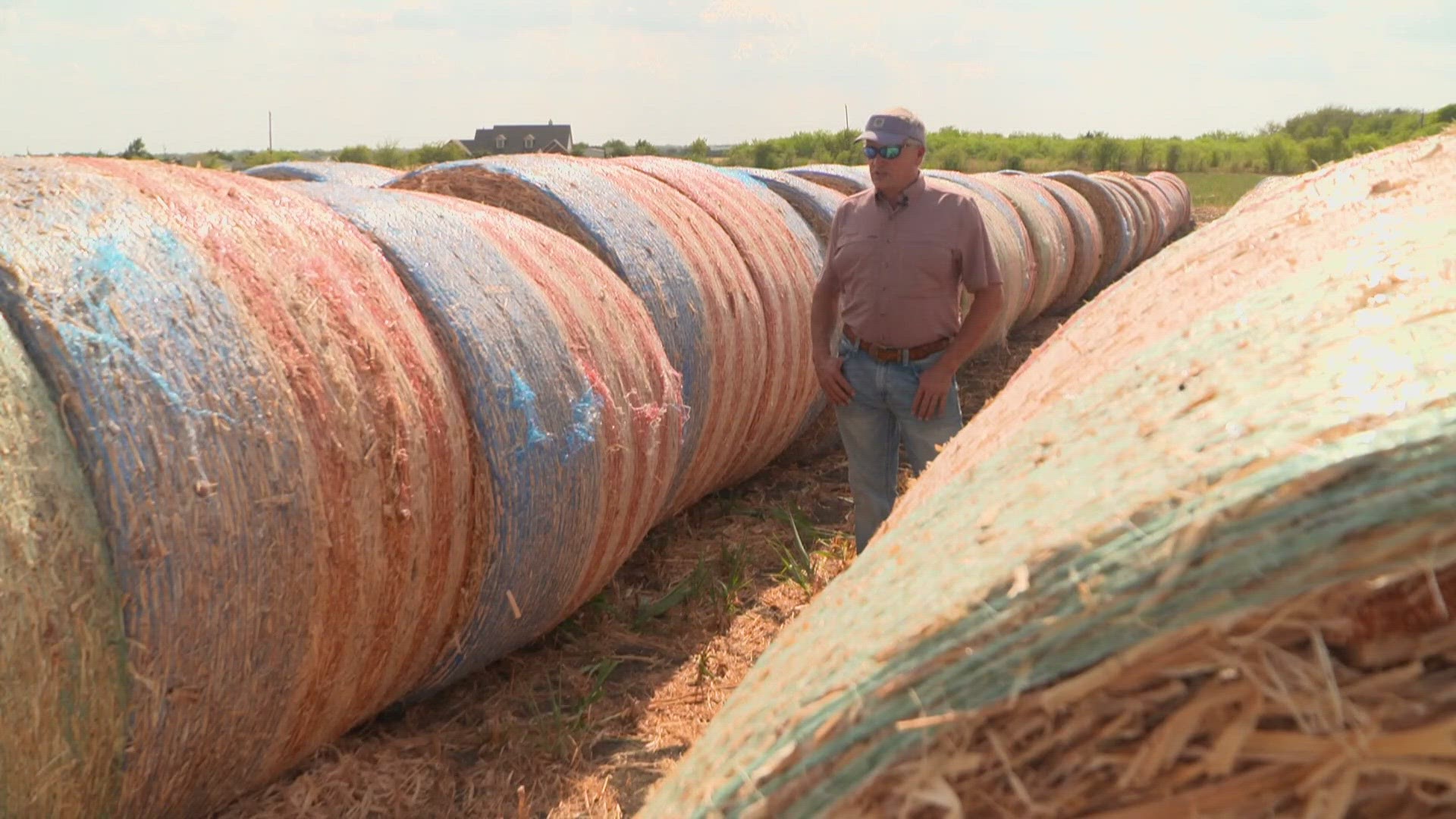ALVARADO, Texas — The record heat and stubborn drought don’t just make time outdoors miserable. They’re pushing grocery prices higher and Texas ranchers into financial issues.
“The heat dries everything out,” Chris Goodwin, who farms in Alvarado said. “It sucks the moisture out. It’s hard on the plants. It puts them through a stress.”
Goodwin has 5,800 acres of corn and sudangrass along with about 130 cattle. He typically can cut three times when he’s ready to harvest. This year, he could only do it once.
“Everything was set up for a bumper crop,” he said. “Everything was there until we got to June, and then it shut off.”
Early spring rains brought plenty of hope but little moisture.
“To me, this is worse than 2011,” Goodwin said. “This reminds me of 1980, 1981.”
“Everyone kind of breathed a sigh of relief that we were off to a good start,” Texas A&M Ag economist Jason Johnson said. “No sooner did we feel a little better about the situation than the moisture turned off, the temperatures became extreme, and we didn’t get another hay cutting.”
Prices for a bale of hay are $60-65 on a good year. This year, They’re more than double, around $150.
“They’re historically high,” Johnson said. “You look at beef prices are really high at the grocery stores, and that’s the result of the drought of the last two or three or four years.”
In last year’s drought, farmers fed cows with hay reserves, but that’s now gone.
Johnson said this year started with the lowest hay supply in 50 years. More than 60% of Texas is in an extreme, severe or exceptional drought right now.
Ranchers are turning to corn stalks as a supplement to the feed, which Goodwin compares to instant ramen because it’s far less nutritious and has about half the protein value.
“It’s just to keep the bellies full and keep these cattle going,” he said.
Those feed prices force ranchers to sell cattle.
“It can get emotional and there are sleepless nights,” Goodwin said. “You wake up thinking about, ‘How am I going to make this work? What am I going to do?”
The USDA says the cattle count is now the lowest since 1962.
That’s why prices for beef are about 25% higher than last year, roughly double what they were three years ago and continuing to climb.
“That’s a combination of good solid demand from the consumer but also tight supplies from the livestock industry,” said Johnson.
“Our drought is not just here. It’s the whole western half of the United States,” Goodwin said. “The more it costs us, the more it’s going to cost everyone else.”
Everyone benefits when there’s plenty of hay to go around. Ranchers want to produce more and profit from the current price spike for beef, but they need to be able to feed young calves and that requires hay and rain.
“We’re all kind of waiting on Mother Nature to give us a hand, so we can become our own worst enemy,” said Johnson.
Because of the ongoing drought and the time, it takes to raise cattle, Johnson doesn’t expect price relief until at least 2026 if nature cooperates.
“Everything we do in agriculture, the challenges just keep getting bigger and bigger,” Goodwin said. “All we can do is plan the best we can for the card we’re dealt.”
“At these prices, it encourages even cattle producers to eat some pork and chicken now and again,” joked Johnson.

